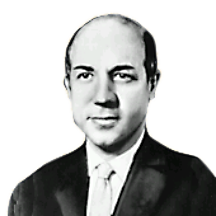Robert Hofstadter was born in New York in 1915. He completed his studies in physics and mathematics cum laude in 1935, and was awarded his doctorate from Princeton University in 1938. In World War Two, he was engaged in weapons development. In 1950 he was appointed professor of physics at Stanford University and moved into the field of nuclear physics.
Robert Hofstadter was awarded the Nobel prize for physics in 1961, “for his pioneering studies of electron scattering in atomic nuclei and for his thereby achieved discoveries concerning the structure of the nucleons.”
A very powerful electron accelerator, the construction of which had by then been completed at Stanford, helped Hofstadter in his research and enabled him to make some important discoveries in atomic research. He succeeded in measuring the volume, form and density of atomic nuclei, and discovered that the density of the atom was more or less uniform over its entire volume. When he studied the components of the atom, he discovered that the proton and neutron were almost completely identical, except for the proton being positively charged, while the neutron is neutral.
Robert Hofstadter’s discoveries brought about changes in the accepted structure of the atom and advanced research on the forces active within it.
Robert Hofstadter died in 1990.
revealed the qualities of the proton and the neutron and changed our perception of the structure of the atom.




